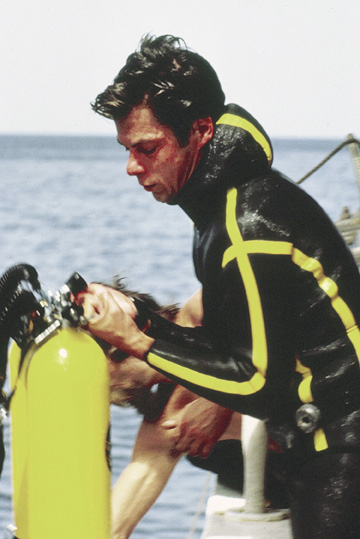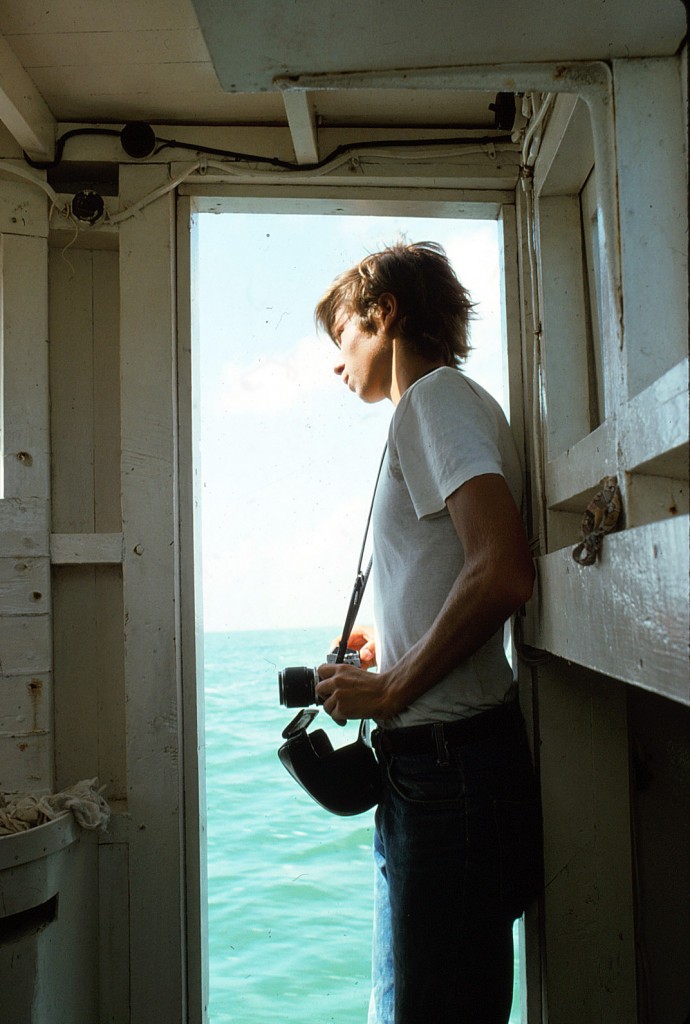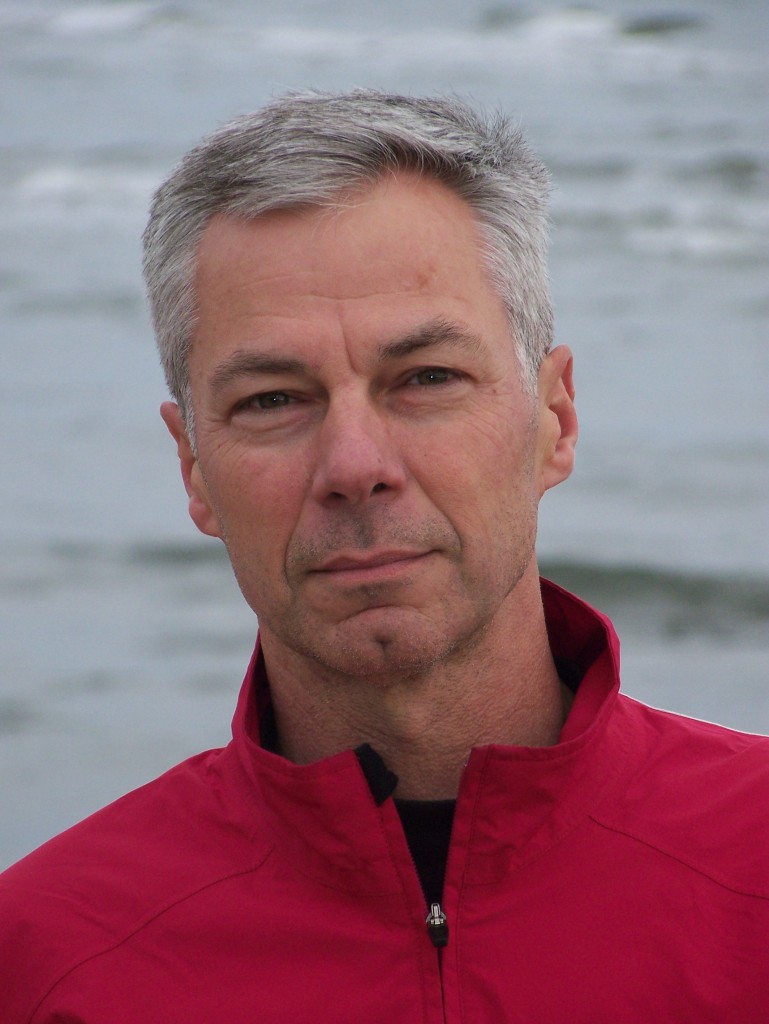As a diver, when it comes to having something good on your resume, it is hard to know what makes you stand out from the crowd. This is not a problem for today’s featured diver Richard Hyman, who is not only a highly experienced diver but also a former Cousteau diver, who completed his first dive in the swimming pool of Philippe Cousteau, before going on to dive with Jacques Cousteau on board the Calypso.
Full Name: Richard E. Hyman
Age: 59
Live In: Weston, CT
Working For: Xerox Corp.
Diver Qualifications: Former Cousteau Diver. Served aboard R/V Calypso.
When and where did you start diving?
My first dive was August 4, 1973. It was in Philippe Cousteau’s swimming pool in Beverly Hills, California.
Why did you start diving?
 Why? Well I had the extraordinary opportunity to work for Captain Jacques Cousteau, the world renowned explorer, entertainer and co-inventor of the Aqua Lung. There was no way I was going to pass up that once in a lifetime opportunity.
Why? Well I had the extraordinary opportunity to work for Captain Jacques Cousteau, the world renowned explorer, entertainer and co-inventor of the Aqua Lung. There was no way I was going to pass up that once in a lifetime opportunity.
Also, I’d always loved the ocean and had been extremely comfortable in the water. I thought it would be amazing to experience “the undersea world”.
With Cousteau it was not automatic. I had to earn my stripes. I started at the bottom of the ladder, first as a truck driver and carpenter, then as a deck hand. The truck came about as that evening after I dove with Philippe in his pool, we joined his father, Jacques for dinner. Jacques asked if I’d be interested in driving a supply truck from Los Angeles to Lake LaRonge in northern Saskatchewan, Canada. It was a time before smart phones. It was even before the Internet. I had no idea where Saskatchewan was but I said yes and I did it. From LaRonge we flew seaplanes into the wilderness, to Foster Lake, where we established a camp and constructed a cabin for the Cousteau team to winter in and dive under the ice, filming Beavers of the North Country.
I was very reluctant to leave the camp but unfortunately I had to head off to my freshman year of college. Thankfully I was invited back. I joined the team aboard Calypso in Mexico the day after Christmas 1974. I still wasn’t a Cousteau diver. This is when I was a deck hand. I also completed independent science study for Furman University. Cousteau always invited experts to join expeditions. For this film on the South American spiny lobster, he’d invited Dr. William Hernkind of Florida State. Bill mentored me and taught me a lot.
From the Yucatan we sailed south to Belize, where we made a film about grouper, “The Fish That Swallowed Jonah”. We also had a visit from the gifted singer songwriter John Denver. That’s when the seed was planted for John’s hit song Calypso.
On my next expedition in 1979 I finally became a Cousteau diver, handling underwater lighting and still photography.
What made you choose to become a dive professional?
I wanted to advance and join Cousteau’s dive team. Working other jobs on the ship was cool but diving offered the ultimate adventure. Divers were also navigators. The days and nights were long and exhausting but I wouldn’t trade any of it for anything.
I might have continued with Cousteau. He invited me on the next expedition, to Clipperton Island. Ultimately I chose a different path.
Which is your favourite dive site and why?
I would have to say the Belize Barrier Reef, although I was quite fond of Martinique as well.
Belize’s reef is the second largest in the world. The water clarity, warmth and abundance and diversity of underwater life was entrancing.

What has been the most memorable dive of your life and why?
That’s easy, diving on the USS Monitor; 230 feet on air with a pretty strong Gulf Stream current and a nice sized Tiger Shark to boot.
We were all narced.
If you would come back as a marine life form in your next life, what would that be?
I’d be a dolphin. They’re smart, fast and playful. I’d just steer clear of bloody Taiji and other brutal geographies.
Who is your dream dive buddy?
I had my dream buddies, Jacques and Philippe Cousteau as well as Bernard Delemotte. Bernard was one cool dude to dive with. In my opinion he has a sixth sense. He could approach creatures on land or beneath the sea and they would not fear him. On many occasions I saw him stroke wild fish. I always laugh about Bernard as he probably never lifted a weight in his life but he had, and probably still has a body like a Greek statue. Maybe that sounds strange but that’s the way it was Lee.
What dive locations are on your dream “bucket list” and why?
Rather than specific locations, my dream, which is now impossible would be to find and dive on Spanish galleons with my Calypso buddy Joe Thompson. We’d salvage some gold along the way. I say this as after my final expedition Joe and I kept in touch. We’d visit from time to time and Joe always said he wanted us to dive on galleons for gold. I always said I was ready whenever he was. Unfortunately we ran out of time as Joe passed away many years ago. He was like a big brother to me aboard Calypso.
What is on your bedside table right now?
I’ve almost finished War of the Whales. It’s excellent and I highly recommend it. I also have Into Thin Air about Everest, My Father The Captain, Steve Jobs, and Harvey Penick’s Little Red Book. That’s a classic golf book. I’m also a golfer, which is not conducive to diving, hard to find the time for either let alone both.
What is your favourite piece of diving equipment and why?
I’m blown away by how the technology has evolved. Even though Cousteau was Chairman of U.S. Divers, we used bare bones equipment. Not a BC on the ship. I was instructed to leave my BC at home, “we don’t use those”. Many of us didn’t wear a watch or have an air gauge or depth gauge either. To answer your question I think I’d have to answer Go-Pro. The size and quality as compared to the large torpedo-sized film cameras we’d use is quite astonishing.
If you were to launch a campaign to raise awareness on a specific issue that affects divers, the oceans or marine life, what issue would you target and why?
I really want to do this, soon! I’m passionate about our environment and sea creatures. I’m sickened by continued whaling, dolphin slaughters, plastic, acidification, etc. I’m have currently working on an approach.
Where will you be in 10 years and what will you be doing?
I’ll be somewhere warmer and of course near the ocean.
I’ll be writing my fifth or sixth book.
I’ll also be involved in an organization or campaign as you put it; something that I start in the not too distant future.
Richard is the author of “Frogmen – The True Story of My Journeys With Captain Jacques-Yves Cousteau and the Crew of Calypso” which is available at Amazon.com by using the link below.







